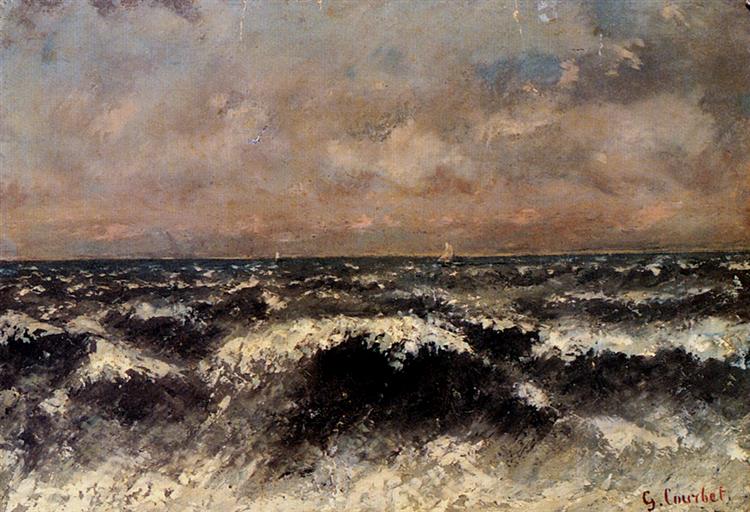Description
Gustave Courbet's painting "Marina" (Seascape) is an outstanding example of the artist's naturalistic approach and his rejection of the academic conventions of his time. A central figure in the 19th-century realist movement, Courbet used his technical skill not only to capture reality, but also to explore the emotions and atmosphere of the landscapes he depicted. This particular work stands out for its powerful depiction of the sea, where water becomes the absolute protagonist.
Looking at the composition, one notices the strong structure that Courbet establishes through the layers and the dynamic movement of the waves. The horizon is marked by an almost horizontal line that runs along the canvas, creating a feeling of vastness that invites the viewer to enter the pictorial space. The colour palette used by Courbet is predominantly cold, with blues and greens dominating the scene, conveying the freshness and strength of the ocean. The whites and greys splashed in the water reflect light and movement, suggesting a sky that, although not fully visible, is hinted at in the upper part of the work.
Unlike many depictions of the sea of its time, which typically incorporated narrative elements or human characters, “Marina” focuses on nature, stripped of any human figures. This allows the viewer to concentrate on the magnificence of the landscape and its atmosphere, creating a more direct connection with the essence of the ocean. The absence of characters can be interpreted as a statement about the grandeur and indomitable nature of the sea, suggesting that humanity is insignificant before its immensity.
On a technical level, Courbet’s execution reveals his mastery of the oil technique. Loose, expressive brushstrokes indicate an almost immediate interpretation of the landscape, which aligns with the ethos of realism. This style, which moves away from romantic idealization, allows the viewer to appreciate the beauty of the everyday and the natural without filters. The clouds, emerging in a misty hue, complement the energy of the ocean, while the sky, although marginalized at the top, suggests an imminent transformation of the weather, another characteristic of Courbet’s approach to capturing moments in time.
In a broader context, Seascape can be seen as a precursor to movements to come in landscape art, influencing later artists who also explored the relationship between humans and nature. Works by later Impressionists such as Monet experimented with light and colour in ways that could be considered inherited, albeit adapted to their own visions.
In conclusion, Courbet's "Marina" is a testament to his skill as an artist and his deep connection with nature. Through his composition, color, and thematic approach, he invited his audience to contemplate the sea not only as a physical space, but as a symbol of nature's strength and beauty. The work stands as a reminder that despite the presence of humanity, nature remains an independent, powerful, and majestic force that deserves to be observed and admired for its own sake.
KUADROS ©, a famous painting on your wall.
Hand-made oil painting reproductions, with the quality of professional artists and the distinctive seal of KUADROS ©.
Painting reproduction service with satisfaction guarantee. If you are not completely satisfied with the replica of your painting, we will refund 100% of your money.

